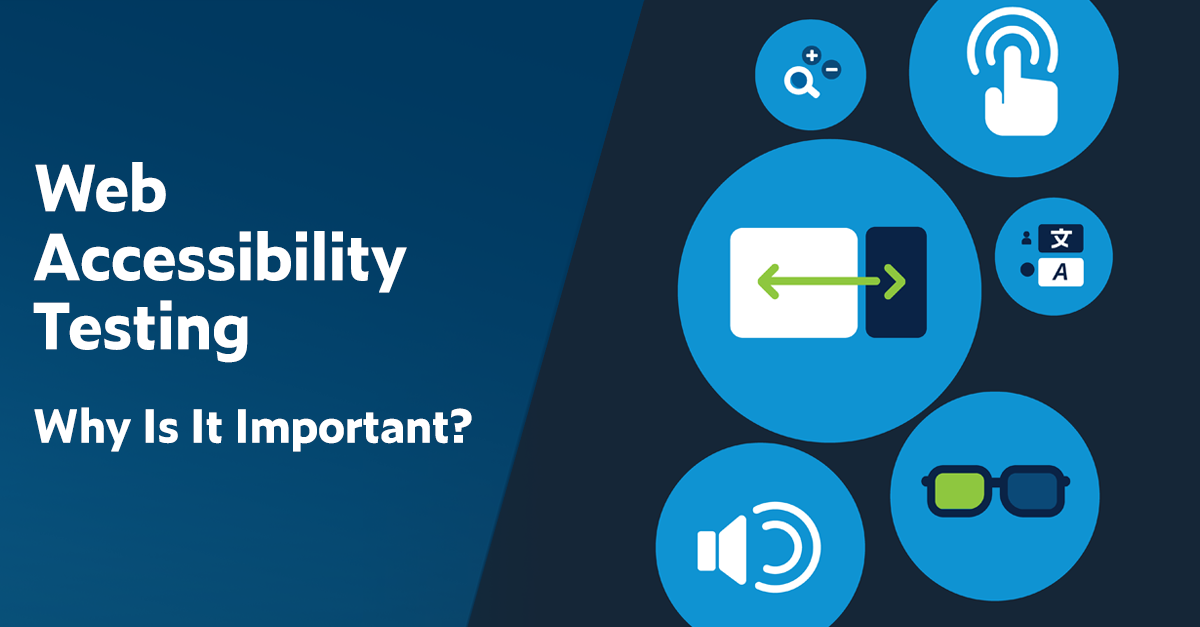Legal Insights Hub
Your go-to source for the latest in legal news and information.
Web Accessibility: The Secret Sauce for Inclusive Design
Unlock the secret to inclusive design! Discover how web accessibility can transform your site and boost engagement.
What is Web Accessibility and Why Does It Matter?
Web accessibility refers to the design and development of websites, applications, and digital content that can be accessed and used by people of all abilities and disabilities. This includes not only individuals with visual, auditory, motor, or cognitive impairments but also those using different devices, such as mobile phones and tablets. According to the World Wide Web Consortium (W3C), creating an inclusive online environment ensures that everyone has equal access to information and functionality, promoting universal design and inclusivity.
Web accessibility matters because it enhances the user experience for all visitors and ensures compliance with various legal standards and regulations, such as the Americans with Disabilities Act (ADA). Moreover, improving accessibility can also boost your website's search engine optimization (SEO) efforts, as accessible websites tend to have better usability and performance, potentially leading to increased traffic and engagement. Prioritizing web accessibility not only fosters a culture of inclusivity but also helps in building a broader audience and a more robust online presence.

10 Key Principles of Inclusive Design for Web Accessibility
Inclusive design is an essential concept in web accessibility that aims to ensure that all users, regardless of abilities or disabilities, can access and interact with web content. The 10 key principles of inclusive design provide a roadmap for developers and designers to create more accessible websites. Firstly, it is crucial to acknowledge the diverse needs of users, which may include individuals with visual, auditory, or cognitive impairments. Secondly, adopting a user-centered design approach fosters empathy and understanding, allowing designers to better anticipate the barriers different users may encounter.
The third principle emphasizes the importance of providing alternative text for images, enabling users with screen readers to comprehend visual content. Following this, the fourth principle revolves around ensuring sufficient color contrast, which helps those with visual impairments to read text easily. Additionally, implementing keyboard navigability is a crucial aspect of inclusive design, particularly for users who cannot use a mouse. The principles also advocate for flexible layouts that can adapt to various devices and screen sizes, ensuring optimal usability. For more detailed insights, the Smashing Magazine provides an excellent resource on implementing these inclusive design practices effectively.
How to Evaluate Your Website for Accessibility Compliance
Evaluating your website for accessibility compliance is crucial to ensure that all users, including those with disabilities, can navigate and interact with your content effectively. Start by familiarizing yourself with the Web Content Accessibility Guidelines (WCAG). These guidelines outline key criteria for accessibility that websites should adhere to. Perform an initial audit using accessibility evaluation tools such as WAVE or Axe. These tools can help you identify common issues such as missing alt text for images or poor color contrast, providing a comprehensive overview of your site's compliance status.
After conducting an automated audit, it’s important to perform manual testing to evaluate accessibility compliance more thoroughly. Navigate your website using only a keyboard to ensure that users who cannot use a mouse can still access all functionalities. Additionally, consider soliciting feedback from users with disabilities who can provide insights into potential barriers they encounter. For further information on accessibility best practices, check out the Nielsen Norman Group's Best Practices for Web Accessibility. By implementing these strategies, you can create a more inclusive web experience for all users.